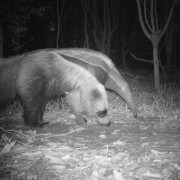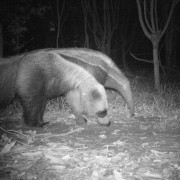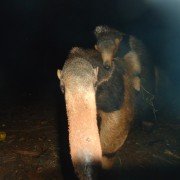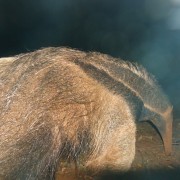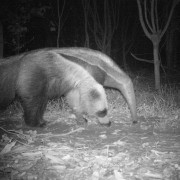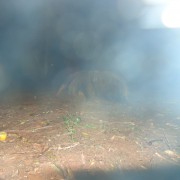Biodiversity
 Giant Anteater
Myrmecophaga tridactyla | Linnaeus, 1758
Giant Anteater
Myrmecophaga tridactyla | Linnaeus, 1758
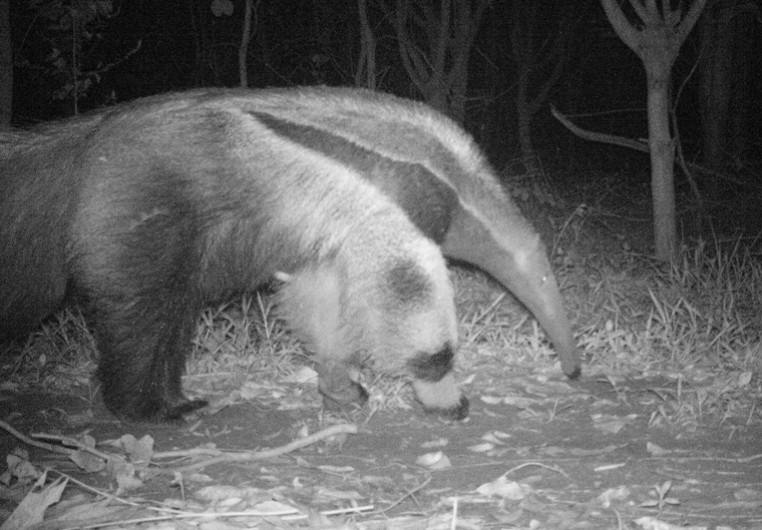
Characteristics: Species measuring about 1m in length and with a tail ranging from 65cm to 90cm. It has a dark coat, with dark gray to black shades, white fur on the forelegs and on the side of the body, and heavily muscled forelimbs with three large claws. Its viscous, flexible tongue measures about 1 meter in length and can be projected out and drawn back into the mouth up to 160 times per minute. It has no teeth, but has large salivary glands producing mucus that helps capture prey.
Distribution: From Guatemala to Northern Argentina.
Habitat: Rainforests, savannas, wetlands and deciduous woods at different altitudes.
Habits: A terrestrial species, unlike the other species of its family (which are arboreal), it is active both during the day and at night, with variations being seen in its activity period even in the same region and on different days. Additionally, they are solitary, except for adult females. This is a peaceful animal, but if threatened will defend itself vigorously, wounding its enemy deeply with its front feet claws.
Diet: Carnivorous and myrmecophagous, feeding on ants, termites, and on the larvae of these insects, consuming up to 35,000 ants/termites per day.
Breeding: The gestation period is 190 days, with a single pup being born which the female carries on its back until it is about a year old.
In the UFRA area: The giant anteater is a broadly distributed species of mammal, occurring in Restored Native Forests, Forests in Spontaneous Regeneration, Organic Sugarcane Fields, and wetlands with herbaceous plants. It is an endangered species in the state of São Paulo.




